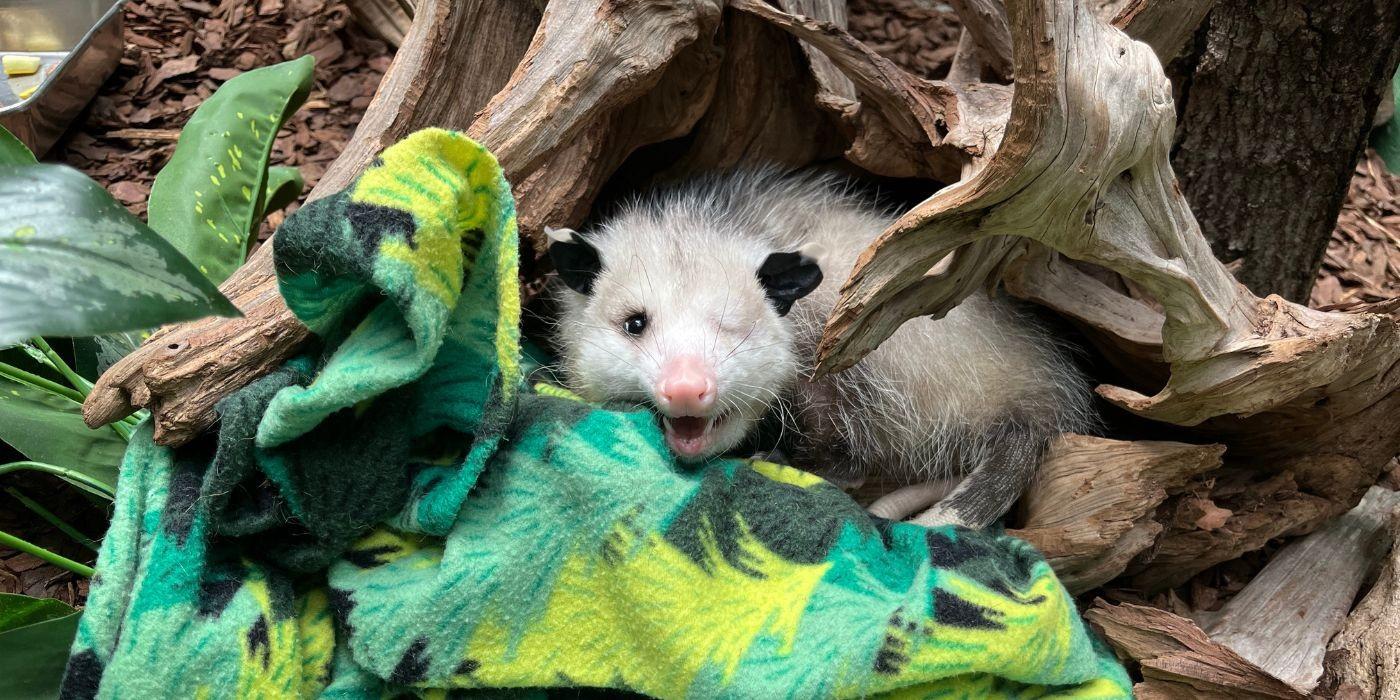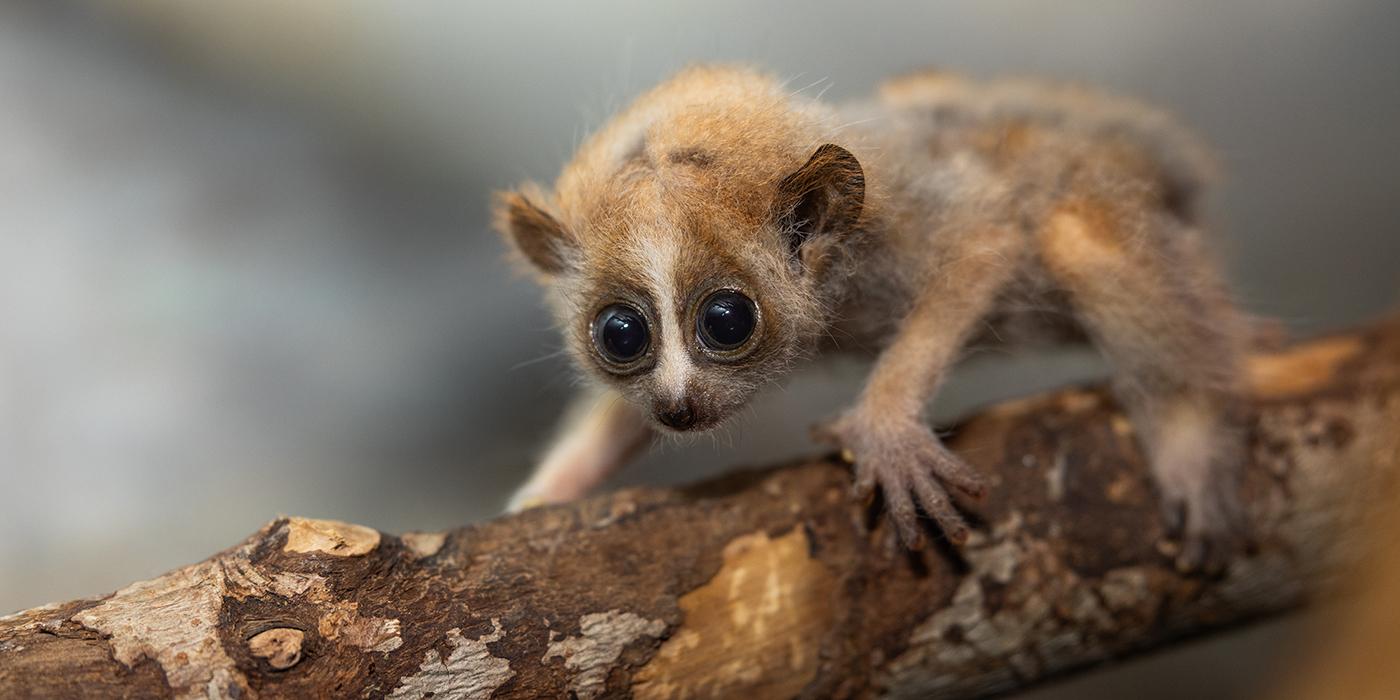Our Pygmy Slow Loris Babies Have Names
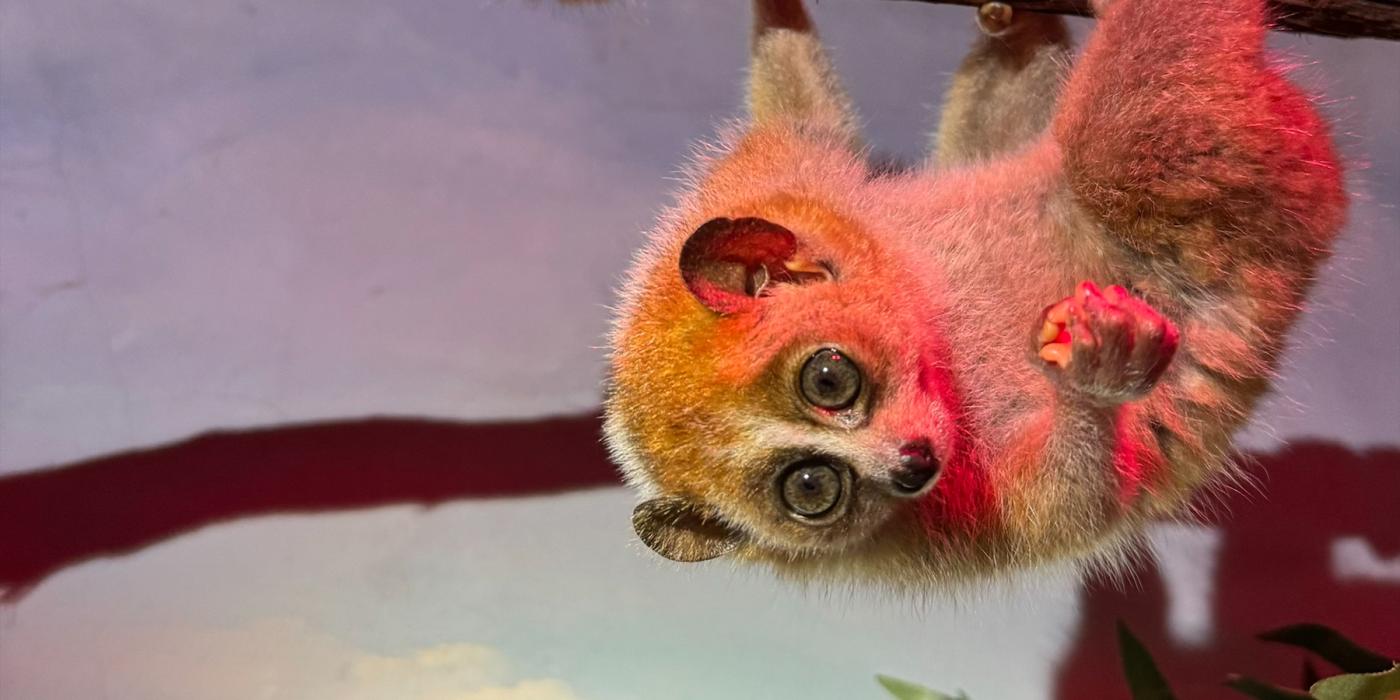
After months of suspense (and a DNA test), Small Mammal House keepers have confirmed the sexes of our 4-month-old pygmy slow loris babies. It’s a boy…and a girl! With this mystery solved, keepers wasted no time in naming the bright-eyed babies. Get an update on them from keeper Kara Ingraham.
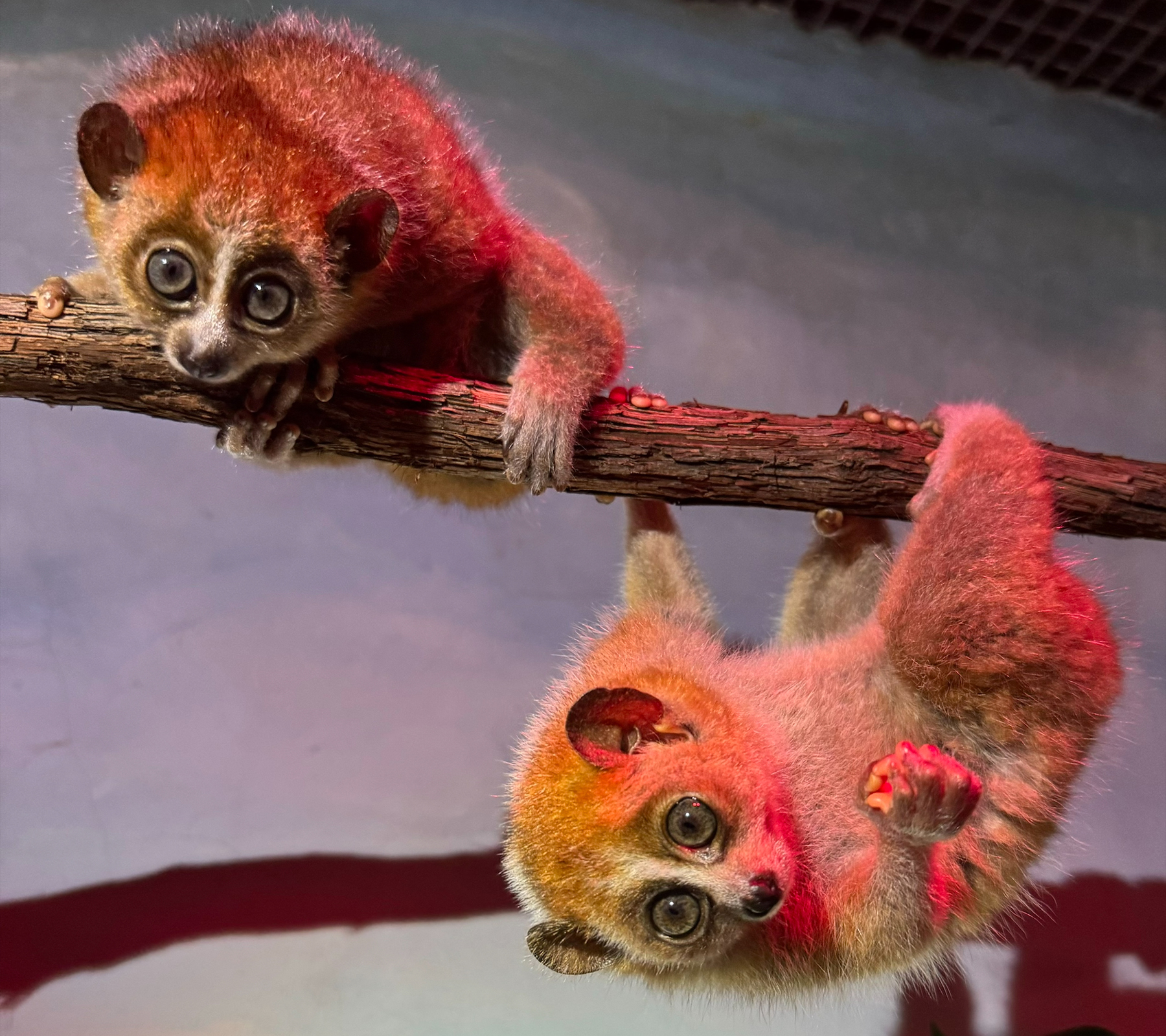
Pygmy slow loris babies Zuko (left) and Azula (right) hang out on the branches in their habitat at the Small Mammal House.
What are the names of the pygmy slow loris babies?
Their parents’ names, Pabu and Naga, were inspired by the Avatar franchise. We thought it would be fitting to continue that tradition and name them after the siblings in the television show. The name Zuko was selected for the male, and Azula for the female.
What have the babies been up to since the last update?
They continue to get braver every day! Now that Zuko and Azula are acclimated to taking food off of the tongs, we have started teaching them basic training behaviors. Like most young animals that participate in the Zoo’s positive reinforcement training program, one of the first behaviors they learned was to voluntarily climb upon a scale for a food reward.
I’m happy to say, we were able to get weights on them during a recent training session! Zuko weighs 222 grams, and his sister is a little larger at 262 grams. For comparison, the parents weigh between 400 and 500 grams. So, they’re growing fast!
Keepers feed waxworms to our baby pygmy slow lorises, Zuko and Azula, using tongs . . . if their dad, Pabu, doesn't take them first!
Although they are food-motivated, one thing that hasn’t changed since our last update is the speed with which they take worms from the tongs. They still take a very long time to do so, which leaves an opening for Pabu and Naga to snatch up those extra treats.
It can be difficult to keep Zuko and Azula’s attention at this age, and they tend to be much more cautious around us than their parents. That said, we look forward to continuing our training program as their confidence grows. We’re already working on scale training. Target training is our next goal, and crate training will begin after that!
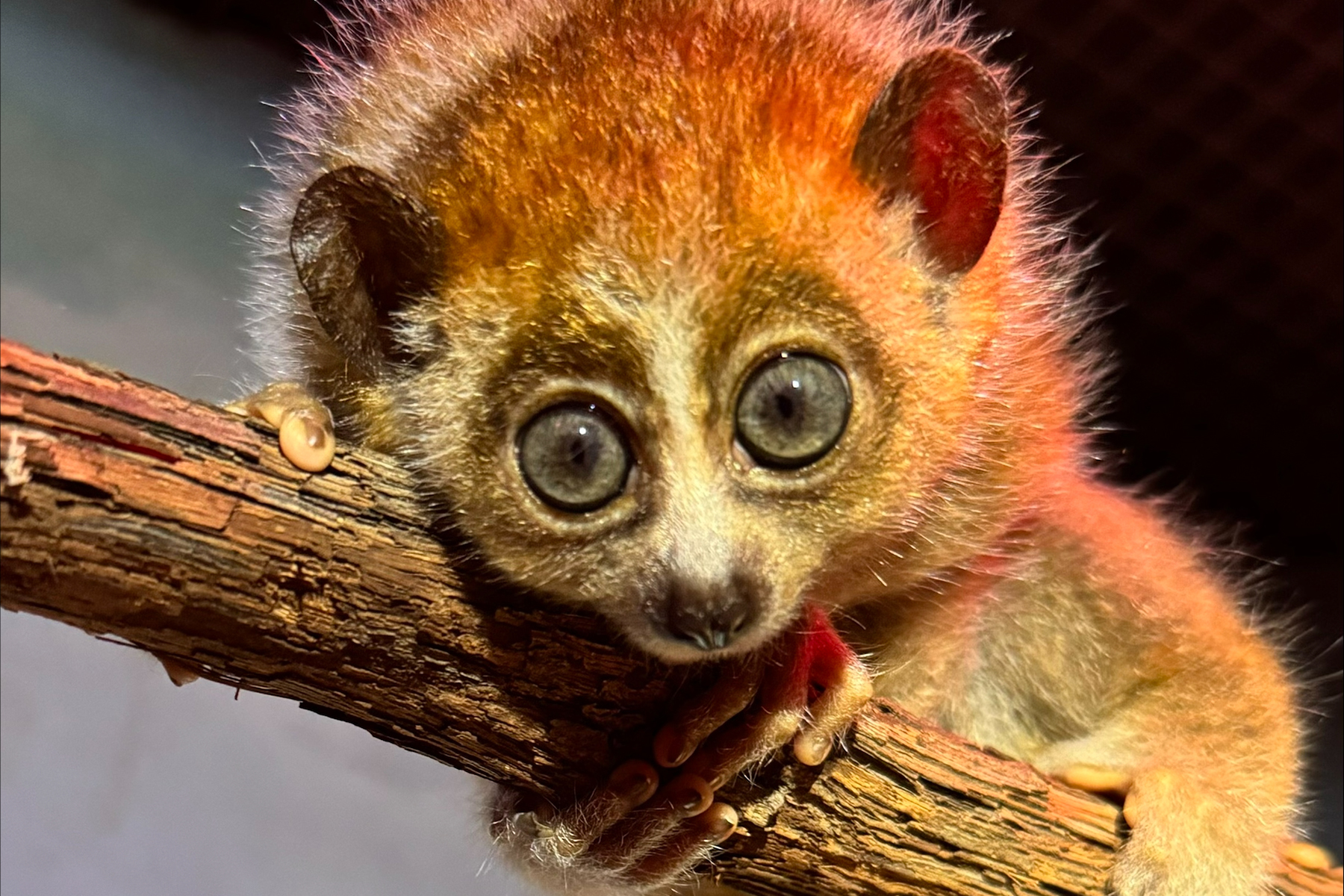
Male pygmy slow loris Zuko holds on to a tree branch in the exhibit.
How are their personalities growing and changing?
Their personalities are similar to what they were a month ago, although Azula does seem to be a bit more willing to investigate new things. Recently, we gave the pygmy slow loris family some non-toxic, water-based paint to explore. Azula wasted no time in checking out the paint—she even touched it!
Zuko was more cautious and hung back. He went around the paint on the branches for a long time before investigating the new substance. He is still the first to take waxworms from the tongs, but it takes some time for him to get comfortable with new experiences.

Female pygmy slow loris Azula hangs from a branch.
Where is the best place to look for them on exhibit?
Because they are nocturnal (animals that sleep during the day and are awake at night), their exhibit area is under red lights to simulate nighttime. They do still sleep primarily in the long tunnel bed but spend a considerable amount of the day (their night) out and about!
Usually, the lorises are out of their bed and looking for food in the late morning and early afternoon. Let your eyes adjust to the low light and look for movement. You can often spot the babies eating from the sap feeders, exploring the branches, or sticking their heads out of their bed! One of their favorite hangout spots is the bamboo plant in the back of their exhibit, where you may just see their eyeshine.
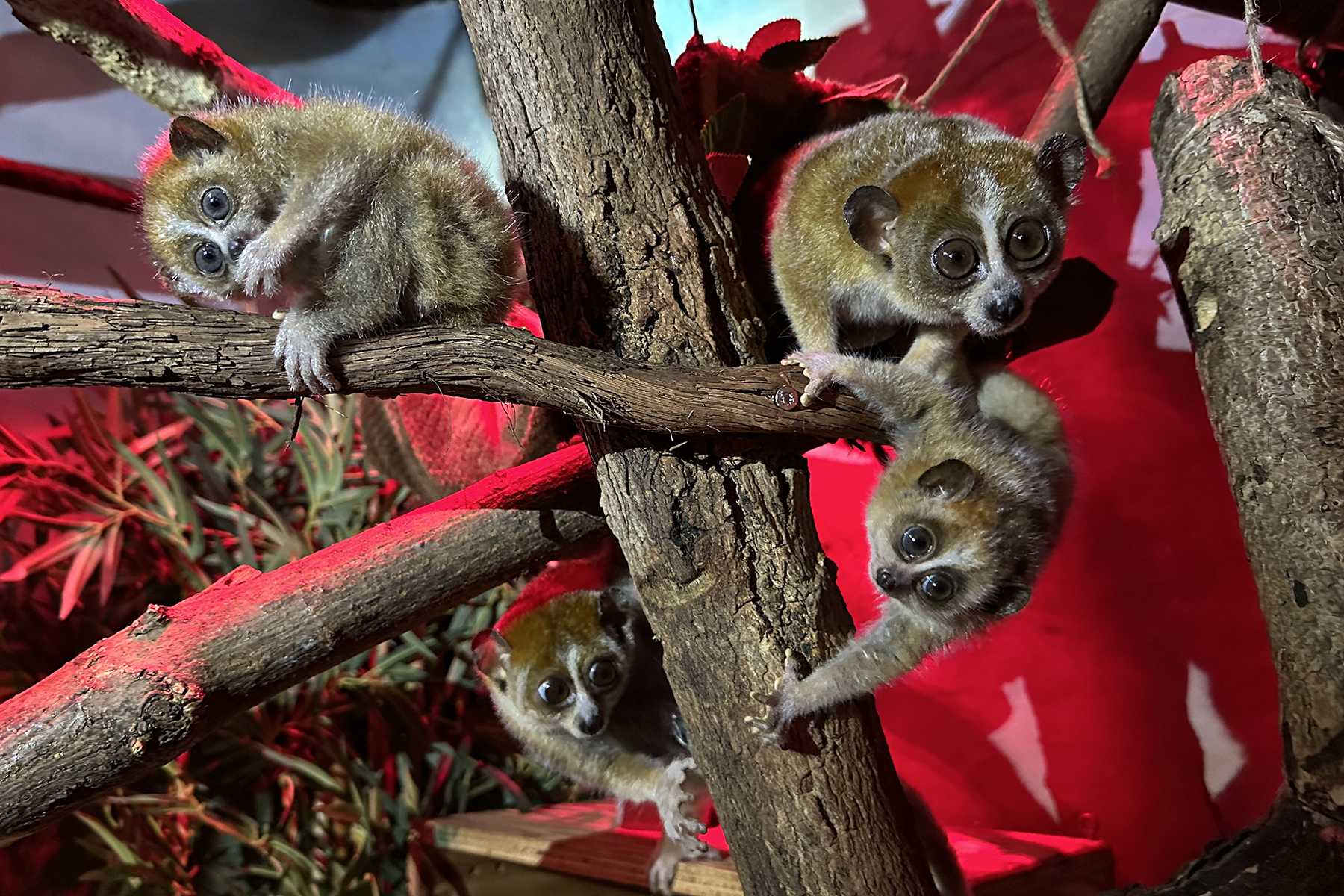
Meet our pygmy slow loris family: Pabu (dad), Naga (mom), Zuko (brother) and Azula (sister)!
I want to help pygmy slow lorises! What can I do?
Educating yourself and others about the impacts of the illegal pet trade is a great starting point to helping this species! As you’re scrolling through social media, be critical of content you see. There are internet videos of lorises being tickled by humans. The animal’s response is to raise its arms up. While this behavior might look cute, the loris is actually exposing its venom glands in an attempt to defend itself. It is not enjoying being tickled.
Liking, sharing and even commenting on “cute” videos of animals in inappropriate situations only increases the likelihood people will want them as pets. But pygmy slow lorises do not make good pets. In addition to their highly specialized diet, they also require unique vet care and a nocturnal habitat. To prevent the extremely painful and venom induced bites, lorises sold into the pet trade often have many teeth removed, which reduces their ability to eat effectively.
Report any videos you see of exotic animals in someone’s home or environment where they cannot exhibit their natural behaviors or seem stressed or uncared for. Do not engage with the content otherwise.
Stop by the Small Mammal House to see our pygmy slow loris family during your next visit! For the best chance to see animals up close, attend daily keeper talks at 10:30 a.m. and 2 p.m. Animals are featured at random. Plan your visit today!
Related Species:

